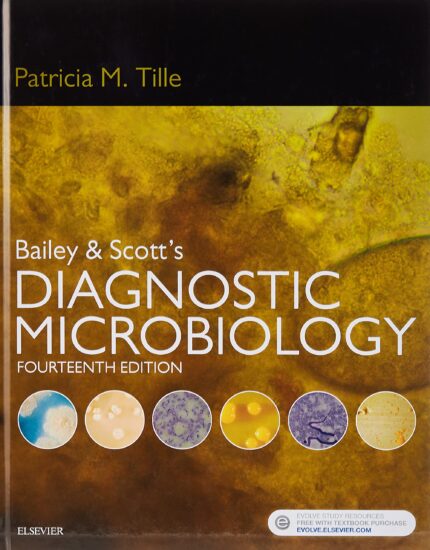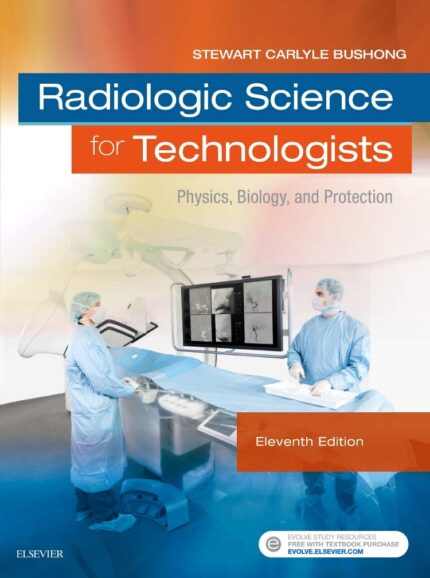Nesters Microbiology A Human Perspective 9th Edition by Denise G. Anderson – Test Bank
Nester’s Microbiology, 9e (Anderson)
Chapter 3 Microscopy and Cell Structure
1) Eukaryotic cells are
A) less complex than prokaryotic cells.
B) members of the domains Bacteria and Archaea.
C) defined by the presence of a membrane bound nucleus.
D) able to reproduce more rapidly than prokaryotes.
E) defined by the presence of a cell wall.
Answer: C
Section: 03.01
Topic: Eukaryotes; Microbial World
Bloom’s: 2. Understand
Learning Outcome: 03.01 Discuss the principles and importance of magnification, resolution, and contrast in microscopy.
ASM Objective: 01.01 Cells, organelles (e.g. mitochondria and chloroplasts) and all major metabolic pathways evolved from early prokaryotic cells.
2) The two magnifying lenses found in a light microscope are the
A) basic and transverse.
B) small and large.
C) ocular and objective.
D) simple and phase.
E) ocular and phase.
Answer: C
Section: 03.01
Topic: Tools and Methods of Culturing, Classifying, and Identify Microorganisms
Bloom’s: 1. Remember
Learning Outcome: 03.01 Discuss the principles and importance of magnification, resolution, and contrast in microscopy.
ASM Objective: 08.01 Properly prepare and view specimens for examination using microscopy (bright field and, if possible, phase contrast).
3) The resolving power of a microscope is described as the ability of the microscope to
A) separate clearly two objects that are very close together.
B) magnify an object.
C) separate the colors of an organism’s internal structure.
D) magnify structures at various depths in a tissue.
E) combine the images of two objects that are very close together.
Answer: A
Section: 03.01
Topic: Tools and Methods of Culturing, Classifying, and Identify Microorganisms
Bloom’s: 2. Understand
Learning Outcome: 03.01 Discuss the principles and importance of magnification, resolution, and contrast in microscopy.
ASM Objective: 08.01 Properly prepare and view specimens for examination using microscopy (bright field and, if possible, phase contrast).
4) In viewing a microscopic specimen, oil is used to
A) increase the refraction AND increase the reflection.
B) decrease the refraction AND increase the reflection.
C) decrease the refraction AND increase the resolution.
D) increase the reflection AND increase the resolution.
E) increase the resolution AND increase the refraction.
Answer: C
Section: 03.01
Topic: Tools and Methods of Culturing, Classifying, and Identify Microorganisms
Bloom’s: 3. Apply
Learning Outcome: 03.01 Discuss the principles and importance of magnification, resolution, and contrast in microscopy.
ASM Objective: 08.01 Properly prepare and view specimens for examination using microscopy (bright field and, if possible, phase contrast).
5) The use of oil with certain high-power objective lenses increases
A) magnification.
B) reflection.
C) resolution.
D) contrast.
E) color.
Answer: C
Section: 03.01
Topic: Tools and Methods of Culturing, Classifying, and Identify Microorganisms
Bloom’s: 2. Understand
Learning Outcome: 03.01 Discuss the principles and importance of magnification, resolution, and contrast in microscopy.
ASM Objective: 08.01 Properly prepare and view specimens for examination using microscopy (bright field and, if possible, phase contrast).
6) If everything else is equal, the best way to observe more details in a microscopic specimen is to
A) increase resolution.
B) increase magnification.
C) increase reflection.
D) increase scatter.
E) decrease resolution.
Answer: A
Section: 03.01
Topic: Tools and Methods of Culturing, Classifying, and Identify Microorganisms
Bloom’s: 3. Apply
Learning Outcome: 03.01 Discuss the principles and importance of magnification, resolution, and contrast in microscopy.
ASM Objective: 08.01 Properly prepare and view specimens for examination using microscopy (bright field and, if possible, phase contrast).
7) The microscope that allows the specimen to appear three-dimensional is the
A) phase contrast microscope.
B) differential interference contrast microscope.
C) fluorescence microscope.
D) dark-field microscope.
E) compound microscope.
Answer: B
Section: 03.01
Topic: Tools and Methods of Culturing, Classifying, and Identify Microorganisms
Bloom’s: 1. Remember
Learning Outcome: 03.02 Compare and contrast light microscopes, electron microscopes, and scanning probe microscopes.
ASM Objective: 08.01 Properly prepare and view specimens for examination using microscopy (bright field and, if possible, phase contrast).










Reviews
There are no reviews yet.